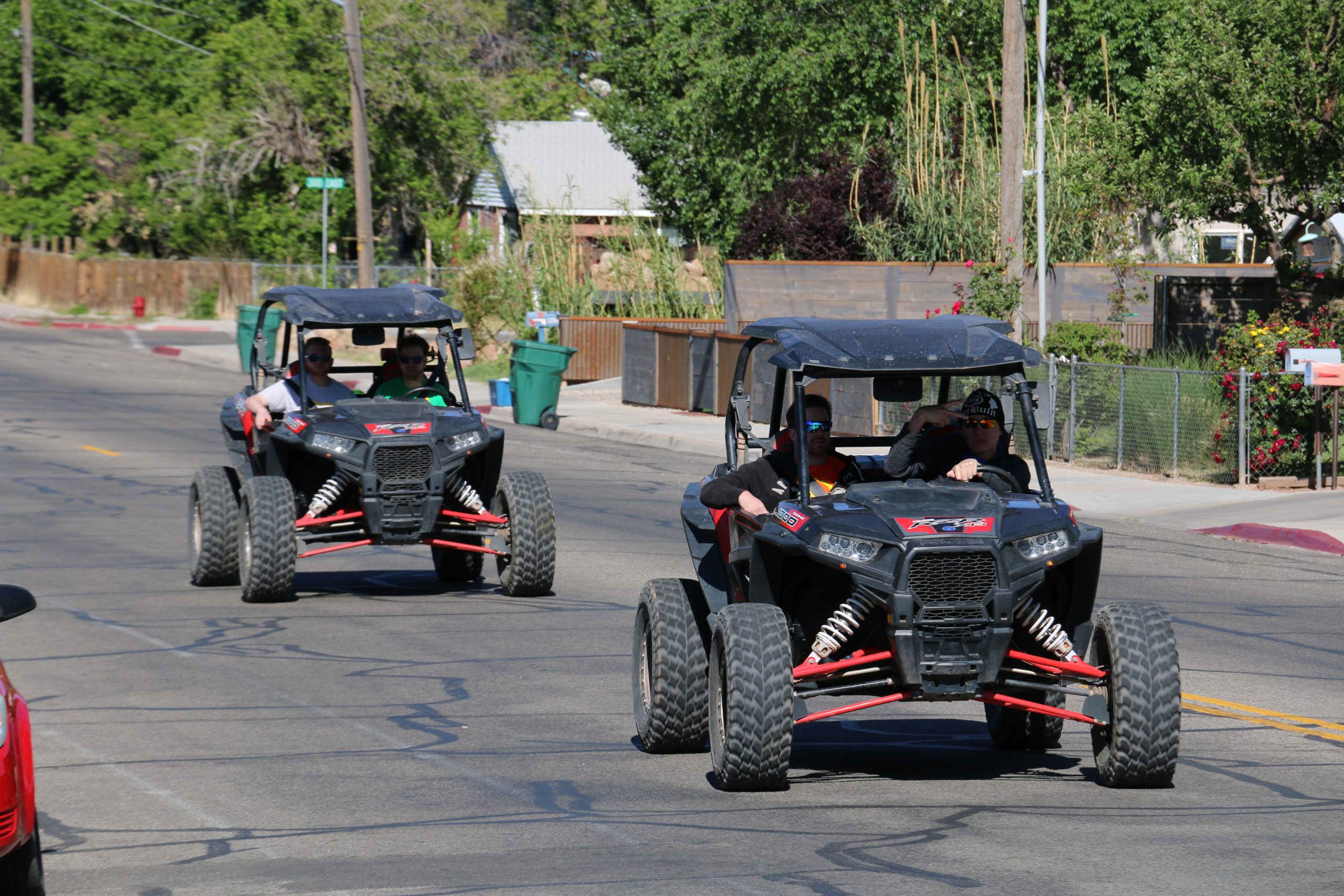Some information may be outdated.
A proposed speed limit reduction in Moab would apply to all vehicles – not only the ATVs and UTVs for which the Moab City Council first drafted the ordinance.
Some Moab residents say they have long been fed up with noisy ATV/UTV vehicles speeding through their residential streets. Along with the noise, some consider the vehicles a safety issue for pedestrians, bicyclists and neighborhood children.
Since viewing the draft proposal at a February city council meeting – a proposed ordinance that would reduce speed limits for ATV/UTV vehicles on specific city streets – it has been determined at subsequent meetings that any speed limit reduction should apply to all vehicles.
“When you reduce the speed limit on certain streets by 5 miles per hour, it generally increases pedestrian safety, and it doesn’t reduce travel time that much,” Moab City Manager David Everitt said.
However, the city will first try a couple of other options, Mayor Dave Sakrison said. One idea the mayor mentioned was to install new solar-powered speed limit signs that flash when people drive above the posted speed limit.
“They do work,” said Interim Police Chief Steve Ross, who said he’s been pricing the radar equipment.
The city is also trying to “beef up” education about the issue, so drivers will be more aware of the disturbances they are causing in residential neighborhoods, Sakrison said.
The Throttle Down Committee, comprised of a city council member, a county council member, a Travel Council member and other concerned citizens, has been meeting monthly to try to find a solution to the problem. Citizens can pick up free “Throttle Down in Town” signs to place in their yards at the Travel Council office, 84 N. 100 East.
Clif Koontz, executive director of Ride with Respect, said in an email to the Moab Sun News that he appreciates the city applying a potential speed limit to all street-legal vehicles, but “wants to make sure that the enforcement is likewise uniform.”
Koontz said he is concerned that reducing the speed limit would not reduce noise impacts.
“Similar to snowmobiles, most ATVs and side-by-sides have (single-speed) transmissions that produce a very similar level of sound at 20 (miles per hour) compared to 25 (miles per hour), while the exposure time is significantly longer to pass a given property,” Koontz said.
Kent Green, owner of Moab Cowboy Country Offroad Adventures, said he believes most people are not intentionally trying to annoy residents with their driving, and for that reason, education is the key.
“There are businesses in residential areas who rent to people who drive these vehicles, so it’s about educating them,” he said. “People just don’t understand.”
Part of the problem, he said, is that 10 percent of the population has illegal, loud, noisy mufflers.
“I personally hate (the noisy mufflers) myself,” he said. “To me, it’s all about education.”
Green said he does not rent out his UTV side-by-side vehicles – instead, he takes people out on guided trips where, in addition to educating clients about the area’s natural history, his staff informs clients about the laws surrounding UTV use.
“It gives us an opportunity to show people the Moab area, and educate people how to drive (the UTVs) – and stay on the trail,” Green said.
Koontz agrees that education will help solve the problem and suggested that, “Vehicle operators can reduce sound by shifting up or else accelerating more gradually, and that using mufflers which meet the industry standard for public use (as opposed to closed-course competition) benefits motorized recreation and the community at large.”
Green contends that any speed limit reduction should apply to every street in Moab, except state-owned highways. If only certain streets have speed limits of 20 miles per hour, some motorists will simply use side streets to go faster, he said.
However, the city is looking only at areas where the noise and safety issues appear most concentrated. Mayor Sakrison mentioned 400 East, 500 West and 400 North as problem areas. Other streets where speed limits could be reduced include areas around schools, and long stretches of road in residential areas. Sakrison also mentioned Knoll Creek Drive and Williams Way as other possible areas where speed could be reduced.
Only selected streets would drop from 30 to 25 miles per hour. An informal sound meter spot-tested at various intersections found that the jump in noise level from 20 to 25 miles per hour was significantly higher than the increased sound going from 25 to 30 miles per hour, Everitt said.
“We’ll look at areas where we have received significant complaints; certain areas that are known where people go faster than they should,” he said.
Applying lower speed limits to all vehicles would avert potential problems such as cars and trucks passing the slower-going ATV/UTVs. A universal speed limit would also eliminate potential lawsuits claiming discrimination, city staff determined.
Additionally, two speed limits for different types of vehicles would cause confusion, as well as discourage tourists who come to Moab for off-road recreation, Everitt said.
“It would be seen as a negative message about being a welcoming city for all kinds of recreation,” he said.
Everitt said the noise issue has been on the city’s radar for several years, and that the problem has escalated with popularity increasing of certain types of side-by-side UTV vehicles. He said those types of vehicles make significantly more noise.
“(A lowered speed limit) would not necessarily be the end-all solution, but it would contribute to the reduction in noise and enhance people’s quality of life,” Everitt said.
Reduction seen as a partial solution for UTV noise in residential areas
(A lowered speed limit) would not necessarily be the end-all solution, but it would contribute to the reduction in noise and enhance people’s quality of life.
Appreciate the coverage? Help keep local news alive.
Chip in to support the Moab Sun News.





